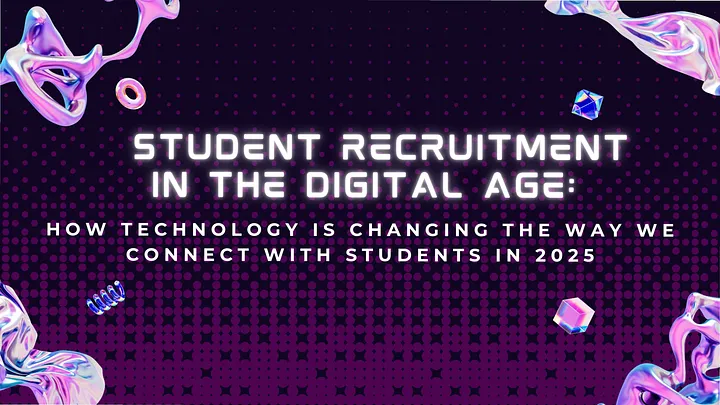The landscape of international student recruitment has evolved dramatically in recent years, with digital transformation playing a pivotal role in reshaping how universities and institutions engage with prospective students. In 2025, technology is no longer just an enabler; it is the driving force behind student recruitment strategies. From AI-driven chatbots to immersive virtual experiences, institutions must adapt to the digital-first expectations of today’s students.
The Rise of AI and Automation
Artificial intelligence (AI) and automation have become central to student recruitment, offering institutions a way to enhance engagement and streamline processes. AI-powered chatbots and virtual assistants provide real-time support to students, answering queries about admissions, scholarships, and program details 24/7. For example, Deakin University in Australia has implemented “Genie,” an AI-driven chatbot that assists students with inquiries related to enrollment and campus life. Similarly, Georgia State University uses predictive analytics to identify students who may be at risk of dropping out, allowing for timely intervention and support.
Social Media and Influencer Marketing
Social media continues to be a game-changer in student recruitment. Platforms like Instagram, TikTok, LinkedIn, and YouTube allow institutions to connect with students where they spend most of their time. Influencer marketing has also gained traction, with universities partnering with student ambassadors and alumni to create authentic content that resonates with potential applicants. The University of Manchester, for instance, collaborates with student influencers to showcase campus life through Instagram takeovers and YouTube vlogs. Similarly, the University of Southern California uses TikTok campaigns to engage prospective students through short, creative videos featuring campus highlights and student testimonials.
Immersive Virtual Experiences
The rise of virtual and augmented reality (VR/AR) has transformed the way students explore universities. Virtual campus tours provide an immersive experience, allowing students to explore facilities, classrooms, and dormitories from the comfort of their homes. The University of California, Berkeley, offers an advanced virtual reality tour that allows students to navigate the campus interactively. Additionally, the University of Glasgow has incorporated AR technology in its brochures, allowing students to scan pages with their smartphones and access interactive 3D models of campus facilities.
Personalization Through Big Data
Big data analytics enable universities to personalize their outreach strategies. Institutions can analyze students’ browsing behavior, application history, and engagement patterns to deliver tailored content and recommendations. Arizona State University effectively uses big data to provide personalized course recommendations based on students’ academic interests and career goals. Similarly, Northeastern University employs data-driven marketing strategies to send customized messages to prospective students, ensuring a more personalized recruitment experience.
The Power of Hybrid Events
While virtual events gained popularity during the pandemic, hybrid recruitment strategies are now the norm. Universities are blending in-person fairs with digital components, such as live-streamed sessions, interactive webinars, and AI-driven matchmaking tools. Imperial College London successfully hosts hybrid open days, allowing international students to attend live virtual sessions while also engaging in-person interactions. Likewise, the University of Toronto has integrated AI-powered networking platforms that connect prospective students with faculty, alumni, and current students based on shared academic interests.
Blockchain for Credential Verification
Blockchain technology is making document verification more secure and efficient. Digital credentials and transcripts stored on blockchain networks eliminate fraud and simplify the admissions process. The Massachusetts Institute of Technology (MIT) has pioneered the use of blockchain-based digital diplomas, ensuring secure and verifiable academic records. Similarly, the University of Bahrain issues blockchain-verified degrees, allowing students to seamlessly share their credentials with employers and other institutions.
The Role of EdTech and Online Learning
The popularity of online learning platforms has created new recruitment avenues. Many institutions are offering micro-credentials, MOOCs (Massive Open Online Courses), and short-term certification programs as a pathway to full-degree enrollments. Harvard University and MIT’s edX platform provides free and paid online courses that serve as a bridge for students to transition into full-time degree programs. Similarly, the University of London offers stackable degree programs through Coursera, allowing students to earn recognized qualifications in a flexible, modular format.
Conclusion
In 2025, digital-first strategies define student recruitment. Institutions leveraging AI, social media, virtual engagement, and data-driven insights will thrive in attracting and retaining global talent. Staying ahead of tech trends is the key to success.

